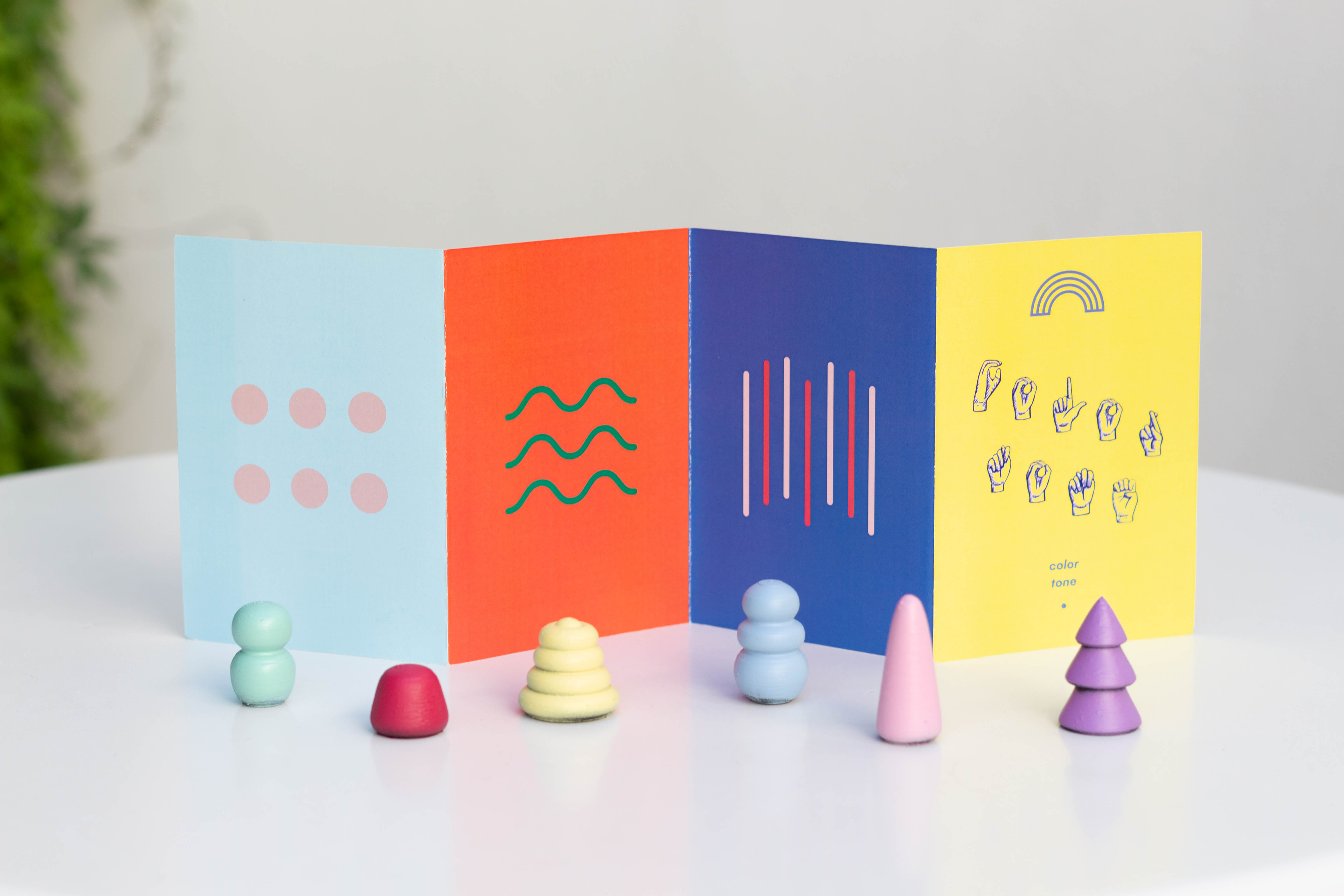
FEEL SOUND AND CREATE MUSIC USING NON-AUDITORY SENSES
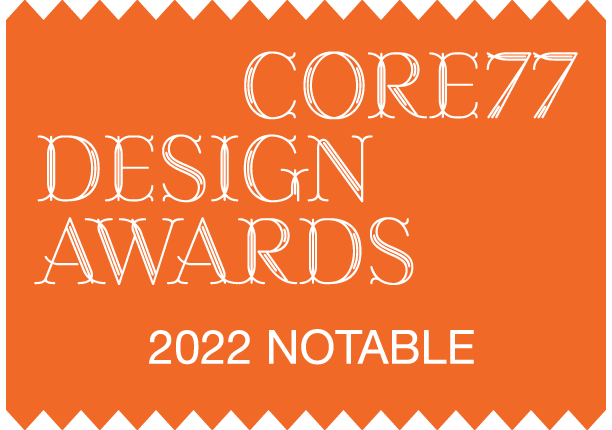
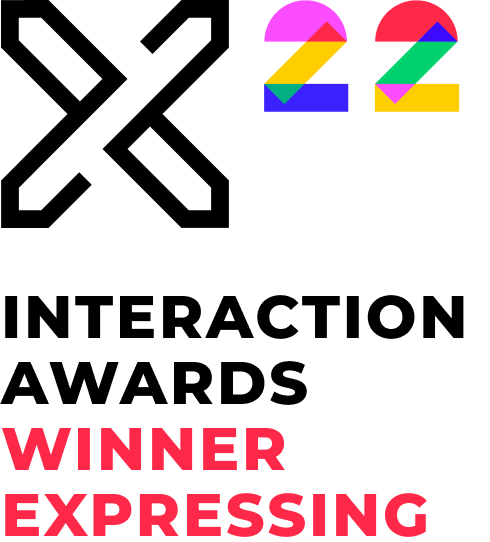

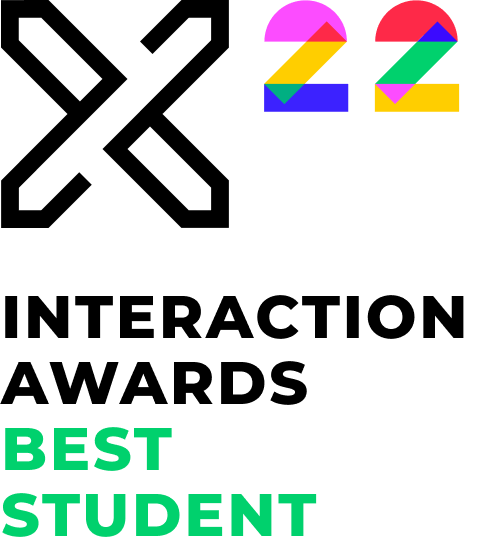

COLOR TONE
Interaction Design, Inclusive Design
Individual Project | 9 Weeks | Feb 2021 | Copenhagen Institute of Interaction Design
IxD Awards 2022, Best Concept Winner
IxD Awards 2022, Best Student Winner
IxD Awards 2022, Expressing Category Winner
Core77 Design Awards 2022, Interaction Student Notable
IxD Awards 2022, Empowering Category Shortlisted
UX Design Awards 2021, Nominated
Role: Design Research, Ideation, Prototyping, User Testing, Graphic Design, Concept Video, Imaging
Tool: Arduino, Rhinoceros, Ultimaker
(3D Printing), Laser Cutting
Machine, Ableton Live, Sound Plant,
Adobe Illustrator, Adobe Premiere
Pro, Adobe Photoshop, Adobe
Lightroom Classic
Advisor: Arunima Singh
DESING OPPORTUNITY
In Costa Rica, access to information for the deaf is limited. This
is due to the lack of a support system for their community, the
misconception that they can understand Spanish, and the fact
that most information is communicated by hearing. This affects
everything from access to public transportation and the health
care system to cultural activities and interactions with others
in daily life. Furthermore, stereotypes about deaf people persist,
especially in more vulnerable communities. These are major
factors in making deaf people feel excluded and separating
their community from others.
Color Tone aims to reduce this sense of marginalization and community separation felt by deaf people in Costa Rica, and to enable them to share their feelings through common experiences with the hearing community, answering the following question: how might we create an inclusive environment by bridging the gap between the deaf and hearing people and reduce the barriers of accessibility?
Color Tone aims to reduce this sense of marginalization and community separation felt by deaf people in Costa Rica, and to enable them to share their feelings through common experiences with the hearing community, answering the following question: how might we create an inclusive environment by bridging the gap between the deaf and hearing people and reduce the barriers of accessibility?
WHAT IS COLOR TONE?
It is a set of tools for people who are deaf or hard of hearing to
experience the physicality of sound. It allows them to access
sound and the information through sight and touch. They can
also use it with others who rely on hearing and share the experiences
and feelings with them. This experience is embodied
by enabling access to sound, giving a new creative outlet for
self-expression, encouraging shared experiences and new ways
of communicating, and empowering people who are deaf or
hard of hearing. The two main components are a portable device
that translates sound into vibration and colors which allow
people to learn the difference between each sound in a non-auditory
way, and a music production tool that allows them to create
music using the colors and tactile sensations.
First, you place the sound tokens on the music ring of the same color, and the lamp will play sound
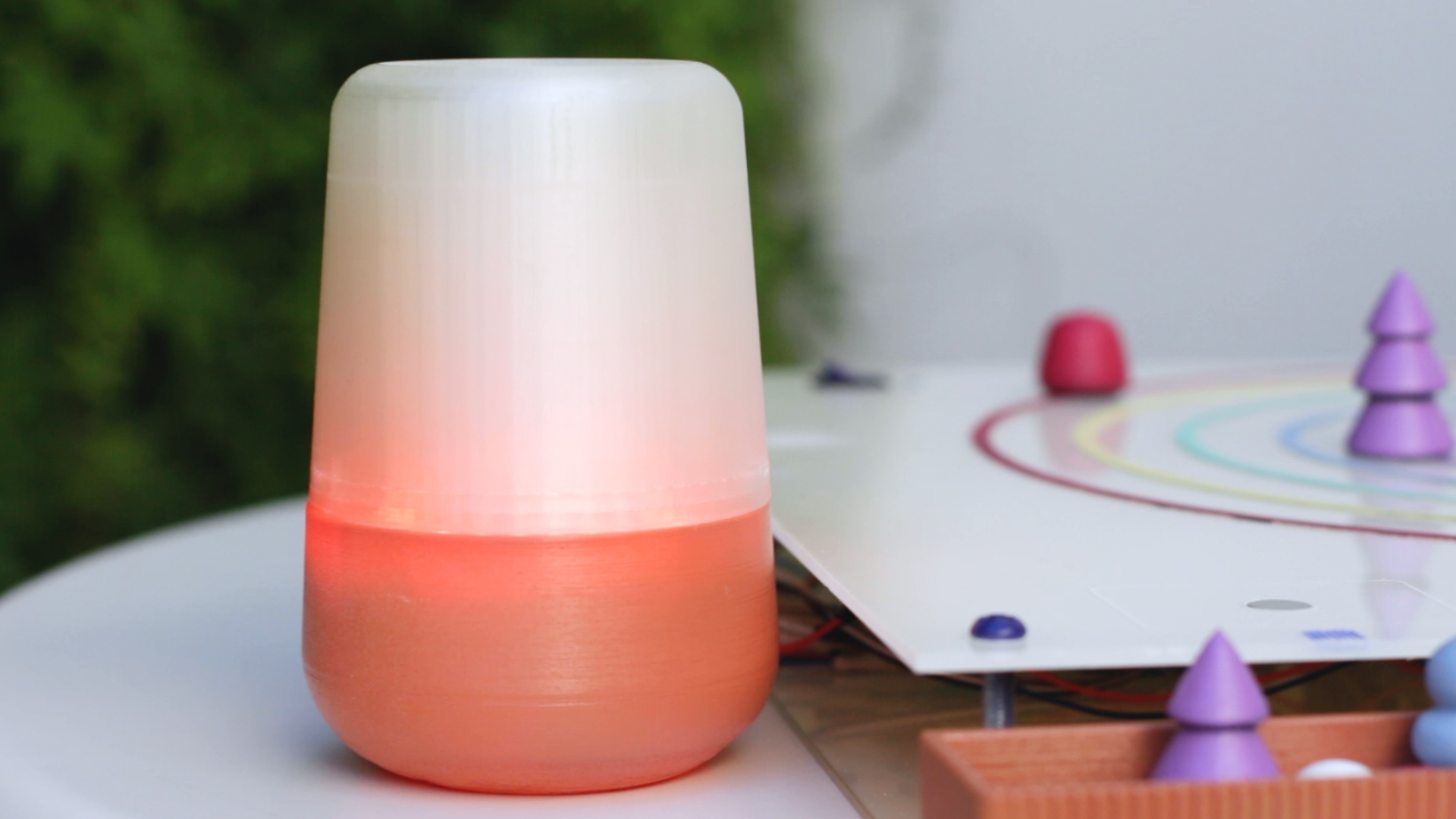
The sound is linked to the color, so each time a token is placed, the color changes


You can also change the space between them and alter the rhythm of the sound
 The more haptic balls you add, the stronger the vibration will be
The more haptic balls you add, the stronger the vibration will be
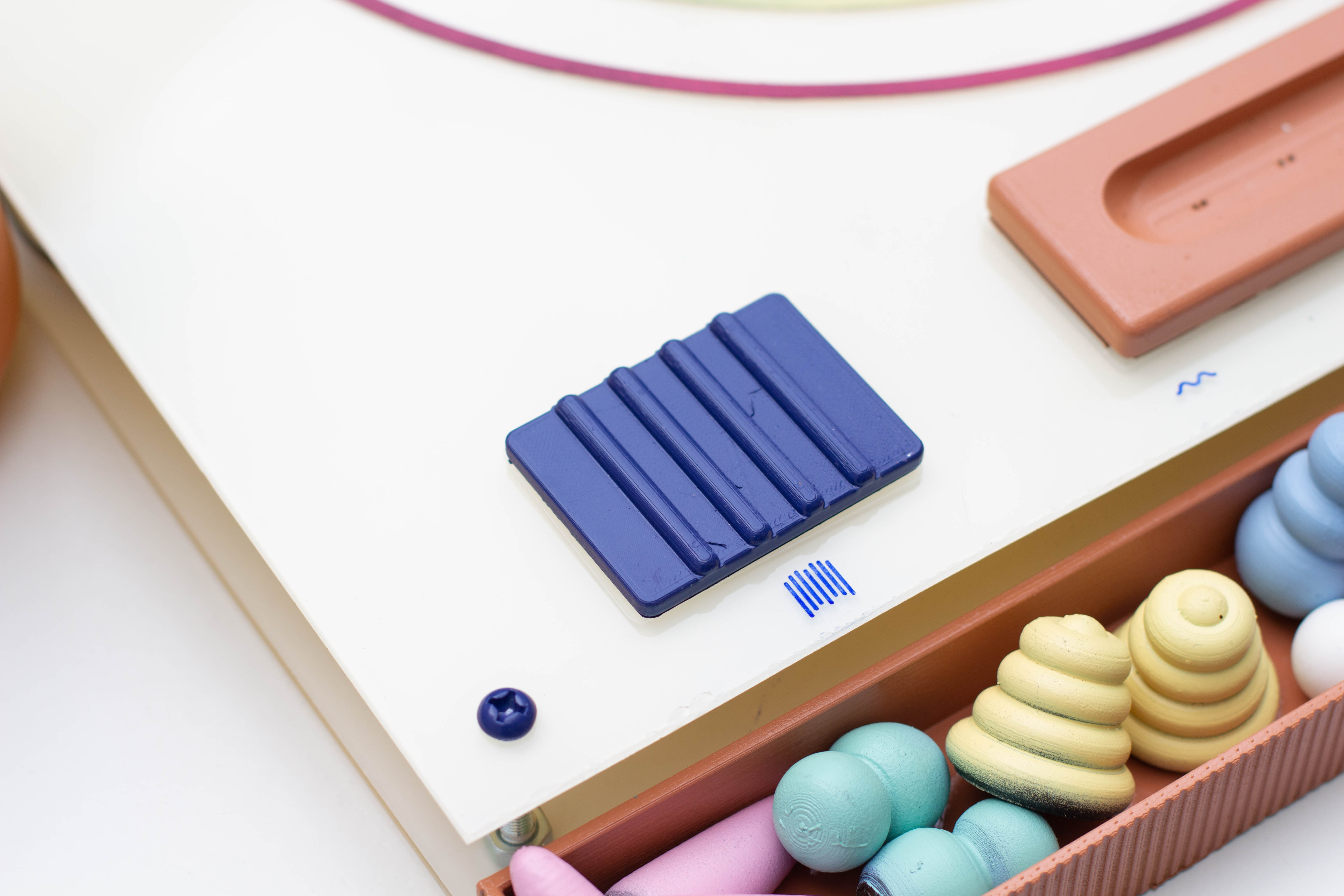 Pitch or tempo blocks can also be added to influence sound or tempo
Pitch or tempo blocks can also be added to influence sound or tempo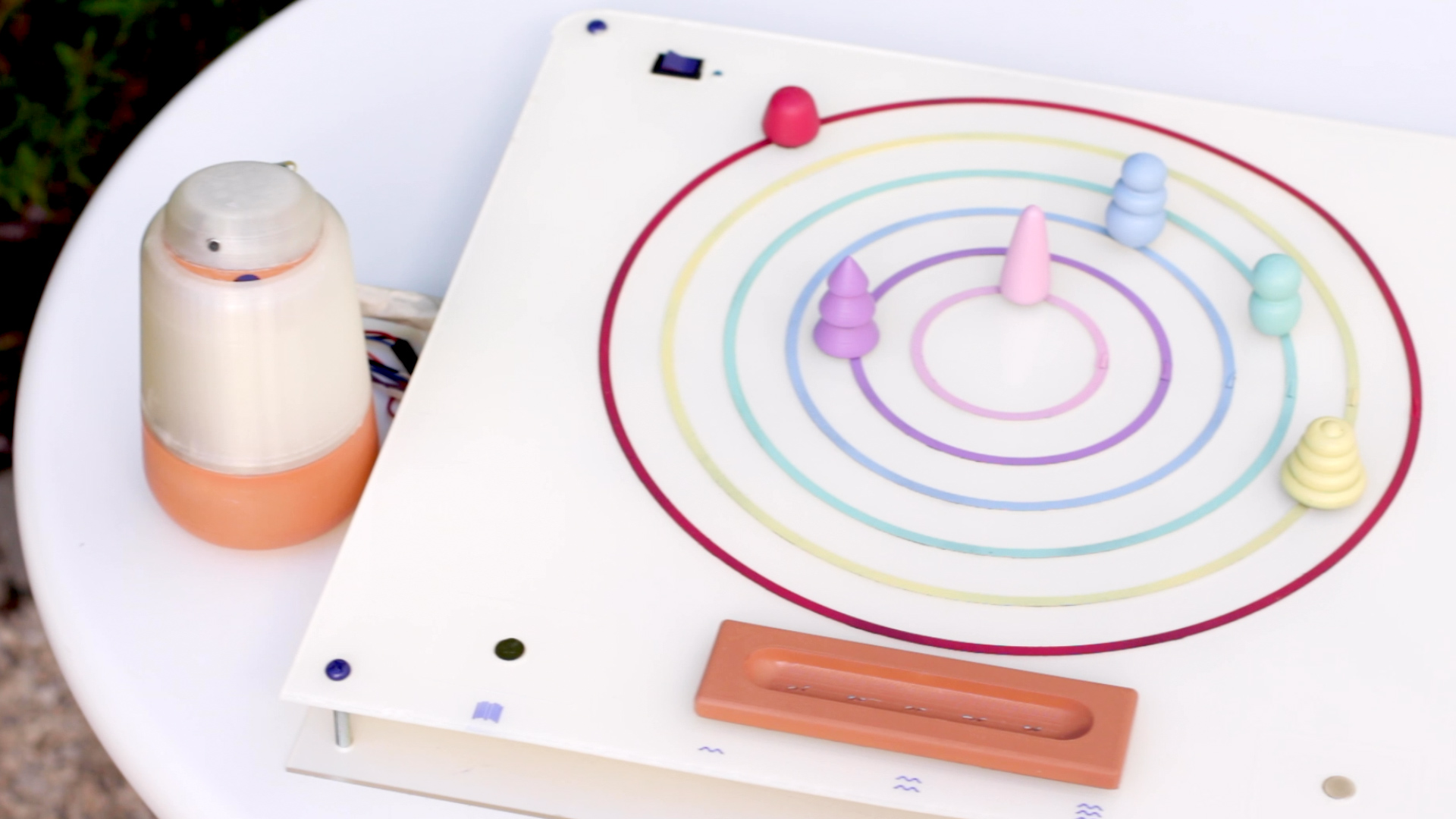
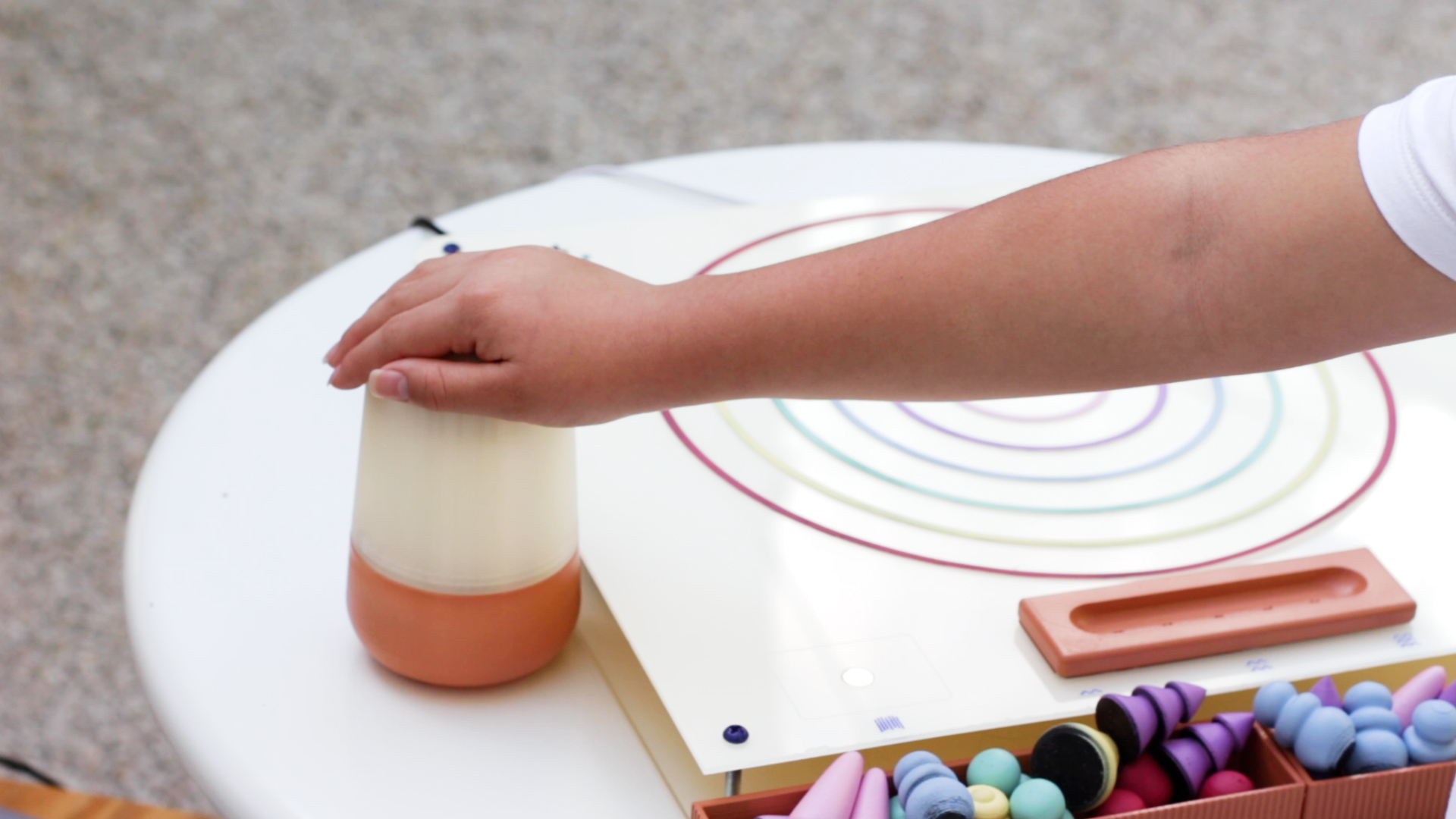
To feel the vibrations, put your hands on the top of the lamp
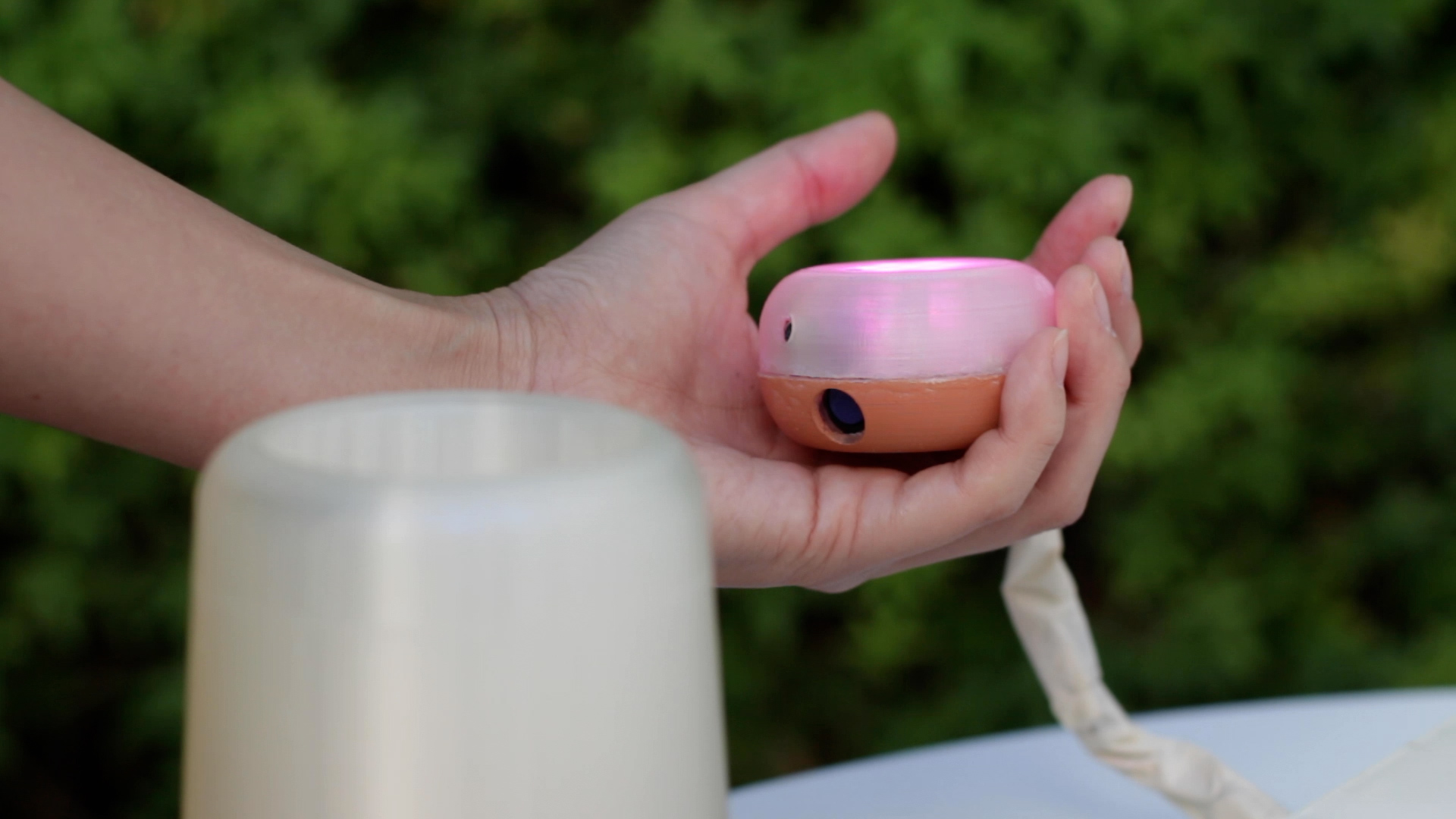
People can bring the portable sound learning device outside and experience the sounds around them with non-auditory senses. The device reacts to the noises and sounds in their environment and emits different colored light while vibrating according to the sound's frequency
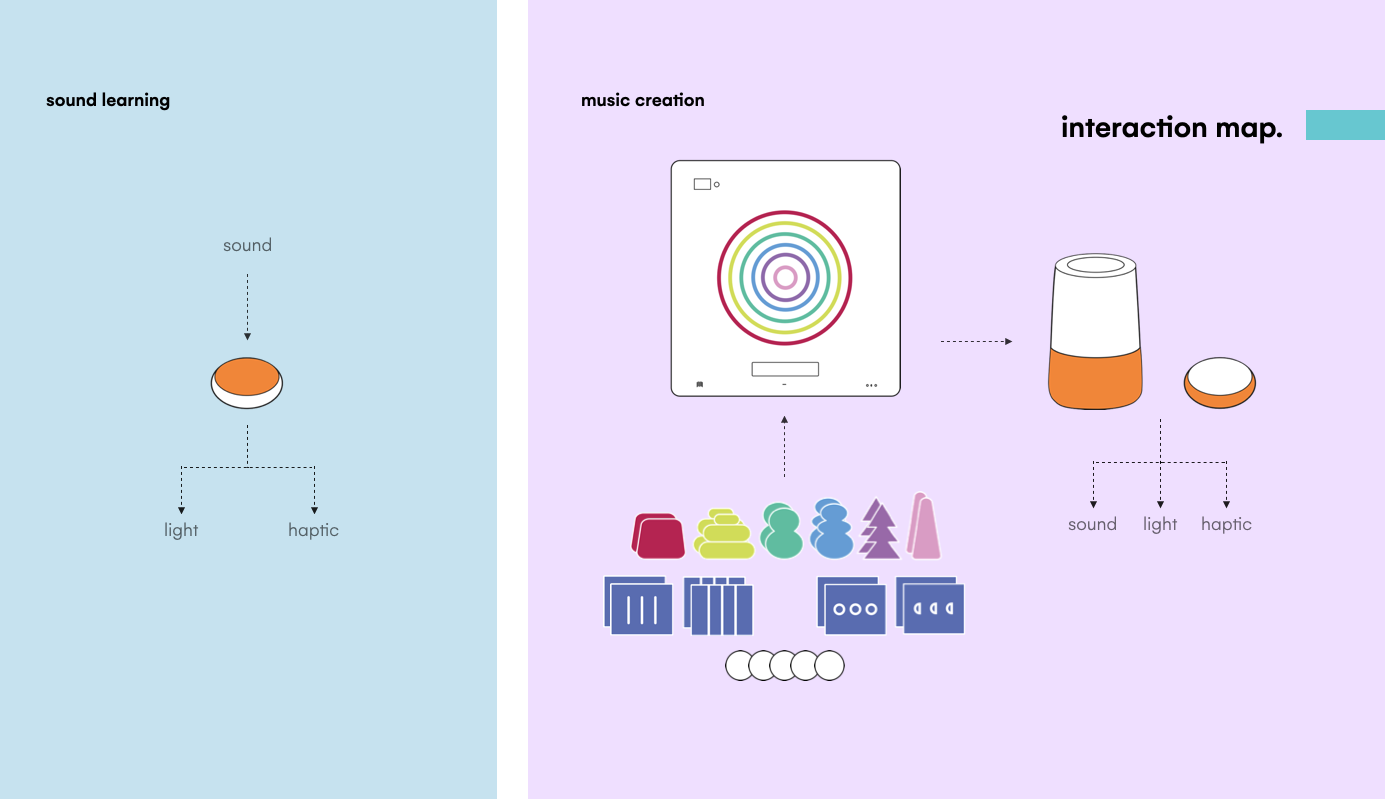

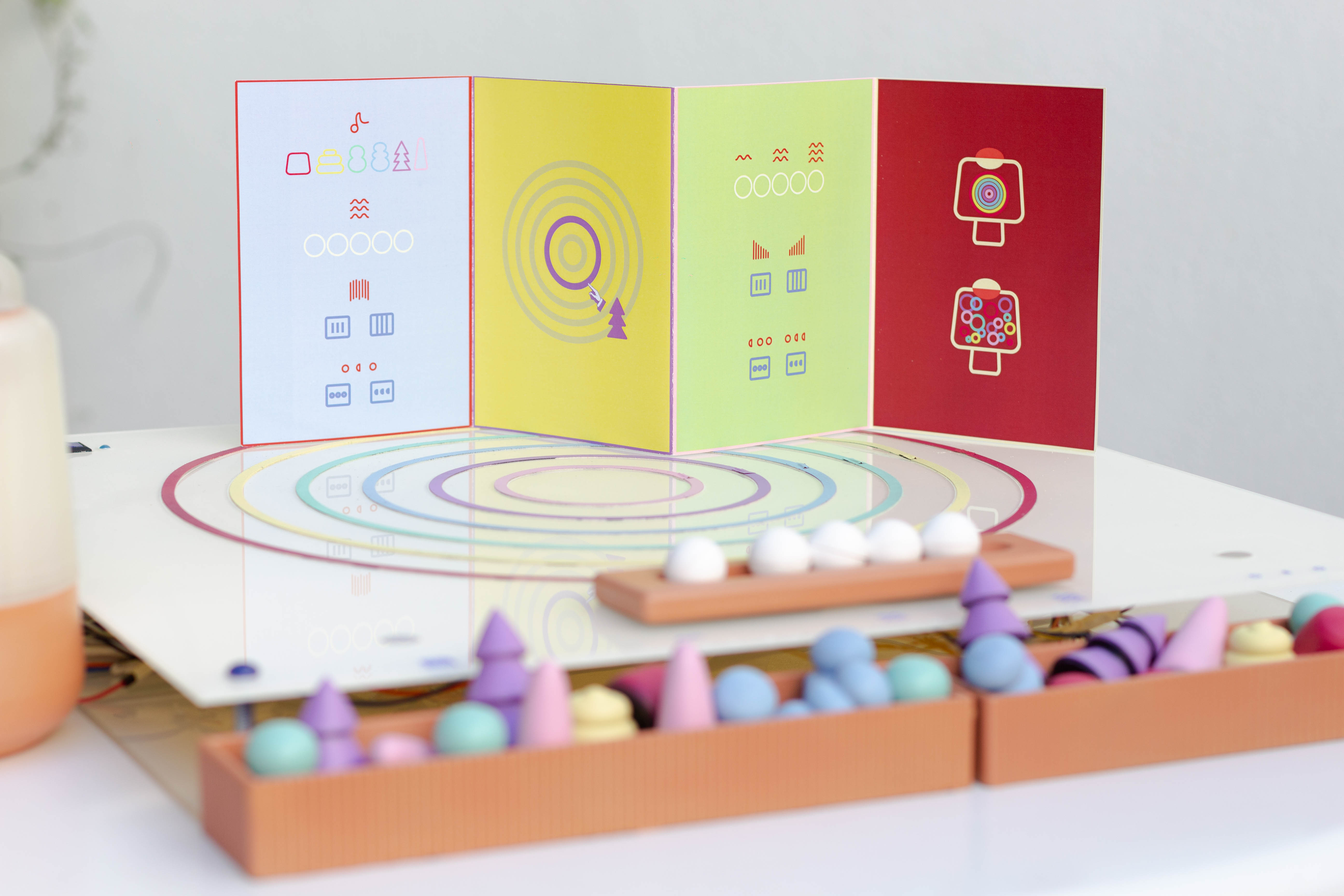
EXPAND THE POSSIBILITIES OF ENJOYING MUSIC AND LOWERING THE BARRIERS BETWEEN THE DEAF AND HEARING PEOPLE BY ALLOWING PEOPLE WITH HEARING LOSS TO PERCEIVE SOUND IN A DIFFERENT WAY
Color Tone was my attempt to expand the possibilities of enjoying music and lowering the barriers between deaf and hearing people by allowing people with hearing loss to perceive sound in different ways. I hope that this project will help spread understanding of deaf people, enable hearing people experience how deaf people perceive the world, and create a connection between them.
RESEARCH PROCESS

We unconsciously rely on sound in our lives. While the sounds of cars and bicycles keep us safe when crossing the street, the sounds of nature and music enrich our lives. In the absence of sound, what would we rely on for our daily lives?
My design process included immersive research, observational research, online surveys, in-depth interviews, and co-creation workshops with the local deaf community in San Jose, teachers for special education, hearing people and music therapists. I began with a silent walk in the city. My first realization of how much I rely on sound in my daily life happened as I walked around the city with earplugs. I also realized how unnoticed the deaf people are in the street. A lot of my time was spent with the deaf community as well, being part of their everyday life, and taking them out into nature to observe how they communicate with each other, with hearing people, and how they use their senses in nature. Through interviews and co-creation workshops, I learned that deaf people want to connect with others outside of their community through direct and intuitive communication, instead of relying on slow interpretation all the time, and that they enjoy music by feeling the vibrations, dancing, and singing in sign language. I was empowered by their pride in their deaf culture and their deep and beautiful sign language, which led me to create something that would allow them to feel connected to hearing people while using music as a means of communication. I spent several weeks refining the prototypes from lo-fi to hi-fi, testing with deaf communities and sound experts. The design decisions were made based on their feedback, including the output of sound to other senses, the variation of scales, and the colors and shapes of the tools. The booklet was created to explain how to use the tool without text, using only icons and colors, because it was difficult to explain words related to sound such as rhythm, tone, and pitch in sign language to deaf people who had little experience with sound during the test.
My design process included immersive research, observational research, online surveys, in-depth interviews, and co-creation workshops with the local deaf community in San Jose, teachers for special education, hearing people and music therapists. I began with a silent walk in the city. My first realization of how much I rely on sound in my daily life happened as I walked around the city with earplugs. I also realized how unnoticed the deaf people are in the street. A lot of my time was spent with the deaf community as well, being part of their everyday life, and taking them out into nature to observe how they communicate with each other, with hearing people, and how they use their senses in nature. Through interviews and co-creation workshops, I learned that deaf people want to connect with others outside of their community through direct and intuitive communication, instead of relying on slow interpretation all the time, and that they enjoy music by feeling the vibrations, dancing, and singing in sign language. I was empowered by their pride in their deaf culture and their deep and beautiful sign language, which led me to create something that would allow them to feel connected to hearing people while using music as a means of communication. I spent several weeks refining the prototypes from lo-fi to hi-fi, testing with deaf communities and sound experts. The design decisions were made based on their feedback, including the output of sound to other senses, the variation of scales, and the colors and shapes of the tools. The booklet was created to explain how to use the tool without text, using only icons and colors, because it was difficult to explain words related to sound such as rhythm, tone, and pitch in sign language to deaf people who had little experience with sound during the test.
Online in-depth interviews with the deaf community in Costa Rica
Online expert interviews

The coffee farm visit to learn how deaf people communicate with each other and hearing people, and how they use their senses in nature
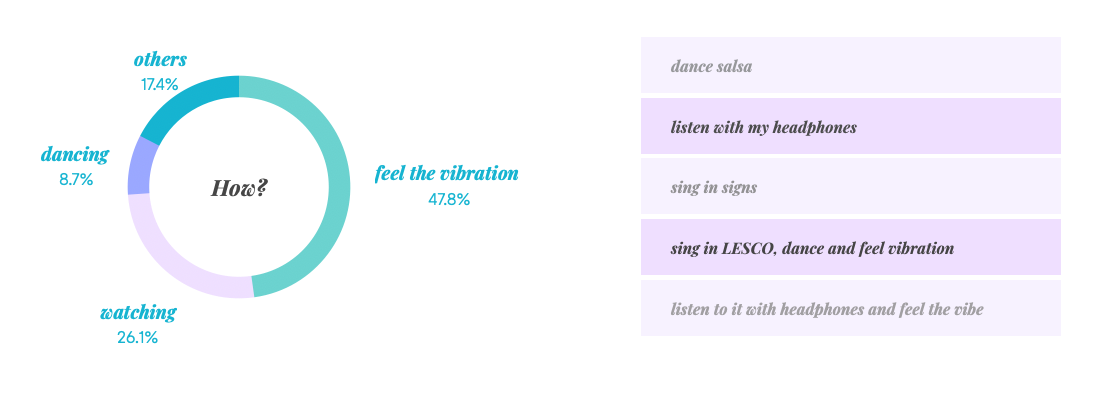
Through my research, I also learned that music is more accessible to them than I thought. In order to get more people’s experiences with music, I conducted an online survey. Deaf people enjoy music by feeling the vibrations, dancing, and singing songs in sign language.
KEY INSIGHTS
🧑🤝🧑 INCLUSIVENESS
In Costa Rica, deaf people often feel left out, especially when there are a lot of hearing people in the room and the conversation focuses on speaking. Even on the street, people often feel uncomfortable when they are spoken to because people are not aware that they are hearing-impaired, and are mistakenly thought to be ignoring them.
“The memorable moment was when I got involved”.
🚌 ACCESSIBILITY
In Costa Rica, access to information for the deaf is limited. It is because most information relies on hearing. When using public transportation, going to the hospital, or watching TV, there is still very little visual information available, and the services of interpreters are not well developed.
"Hearing people don’t care about us”.
In Costa Rica, access to information for the deaf is limited. It is because most information relies on hearing. When using public transportation, going to the hospital, or watching TV, there is still very little visual information available, and the services of interpreters are not well developed.
"Hearing people don’t care about us”.
👁 VISUAL INFORMATION
For deaf people, the ability to obtain information visually is even greater than for those who can hear. And their desire for visual information is very strong. However, since their vision is particularly sensitive to compensate for their hearing, a lot of visual information can become noise to them.
“If we had more visual-based information, our lives would be much easier”.
“I go to mountains because the city is very distructive and tiring (visually)”.
For deaf people, the ability to obtain information visually is even greater than for those who can hear. And their desire for visual information is very strong. However, since their vision is particularly sensitive to compensate for their hearing, a lot of visual information can become noise to them.
“If we had more visual-based information, our lives would be much easier”.
“I go to mountains because the city is very distructive and tiring (visually)”.
🧏 COMMUNICATION
Sign language is the primary language for deaf people, whereas the hearing individual uses Spanish. This language barrier hinders communication between deaf people and hearing people. Also, common misconception that deaf people in Costa Rica receive is that they all understand Spanish. For them, learning a soundless alphabet takes more effort than it does for hearing people learn a language, and more than we imagine, a lot of deaf people cannot understand Spanish.
“Maybe they cannot communicate without aid or sign language”.
“I will use text app on my phone to communicate.”
Sign language is the primary language for deaf people, whereas the hearing individual uses Spanish. This language barrier hinders communication between deaf people and hearing people. Also, common misconception that deaf people in Costa Rica receive is that they all understand Spanish. For them, learning a soundless alphabet takes more effort than it does for hearing people learn a language, and more than we imagine, a lot of deaf people cannot understand Spanish.
“Maybe they cannot communicate without aid or sign language”.
“I will use text app on my phone to communicate.”
🤝 SHARED FEELING
Deaf people recognize that their world is different from hearing people. Many of them wished that there was a society where they could communicate more smoothly and connect with hearing people.
“I wish there were more cultural activities availble that both deaf and hearing people can participate together”.
Deaf people recognize that their world is different from hearing people. Many of them wished that there was a society where they could communicate more smoothly and connect with hearing people.
“I wish there were more cultural activities availble that both deaf and hearing people can participate together”.
CO-CREATION
I originally proposed something like a sign-language translator, and they were very enthusiastic about it. In co-creation workshops and other activities, however, I found out they did not see the value in such slow communication. They wanted to connect with hearing people in a more direct and intuitive way. Their pride as deaf people, deep culture, and beautiful sign language also inspired me. In response, I wanted to do something that would enable them to feel connected to hearing people by using music as a mode of communication rather than giving them a new aid.
Prototype & User Test
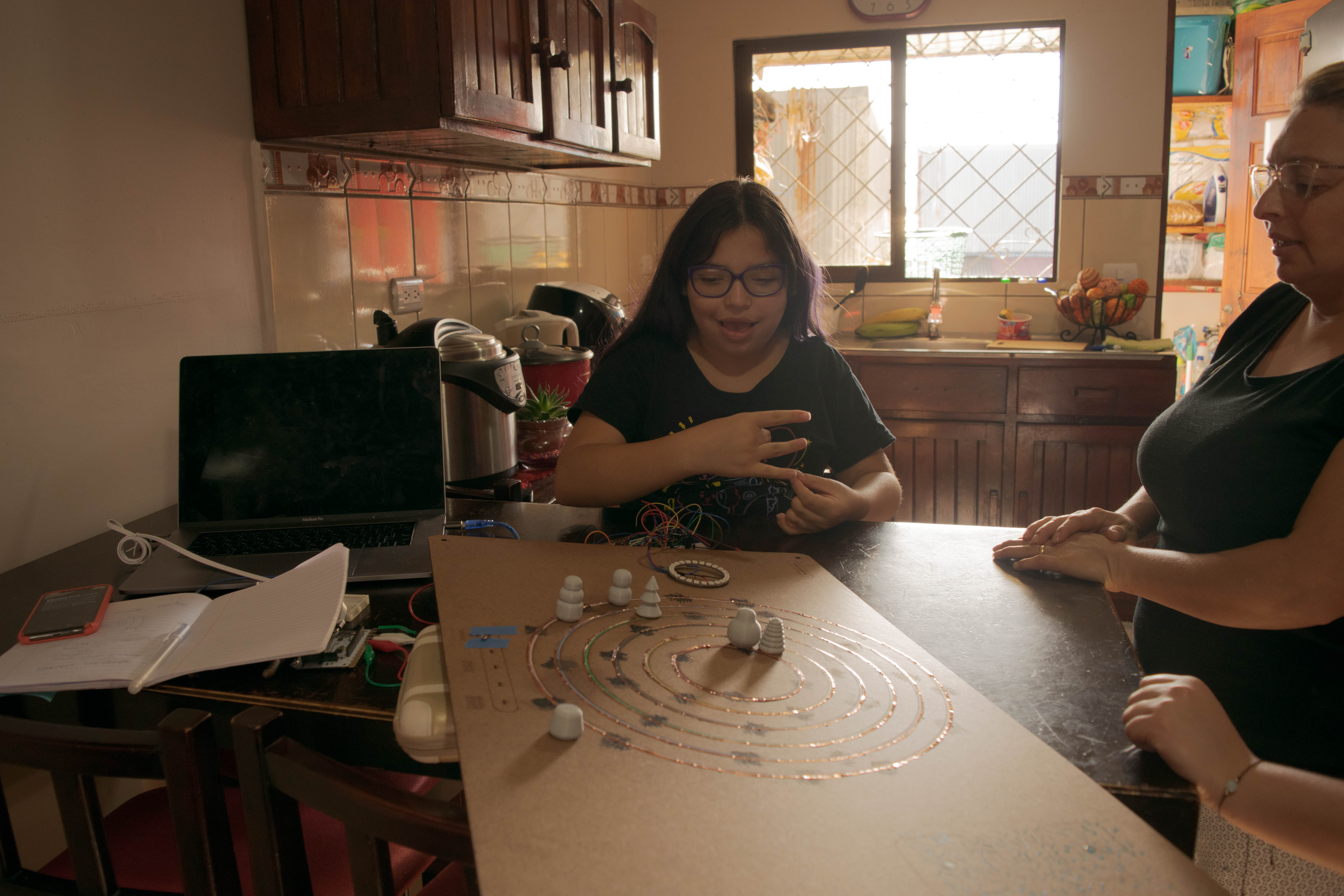

Over the course of a month, I built several prototypes from low-fi to mid-fi, tested my hypotheses, and reflected the perspectives of deaf communities, hearing people and sound experts.


